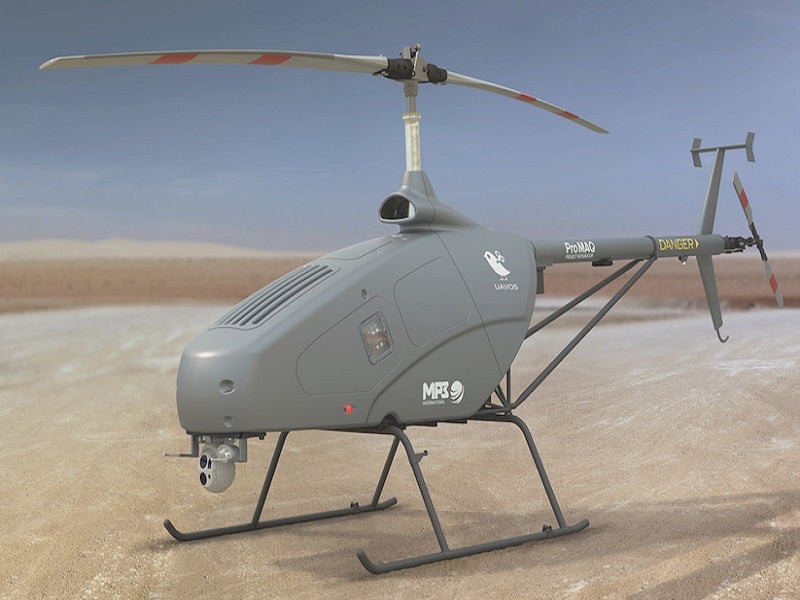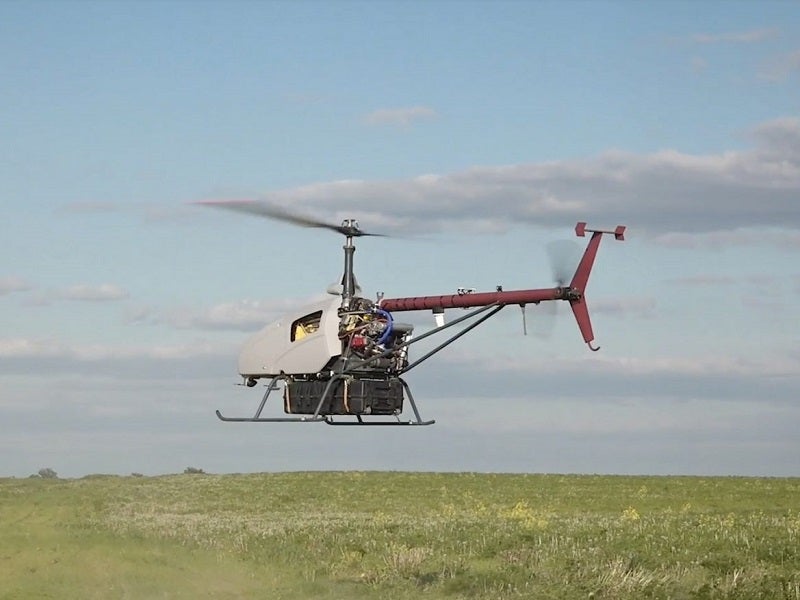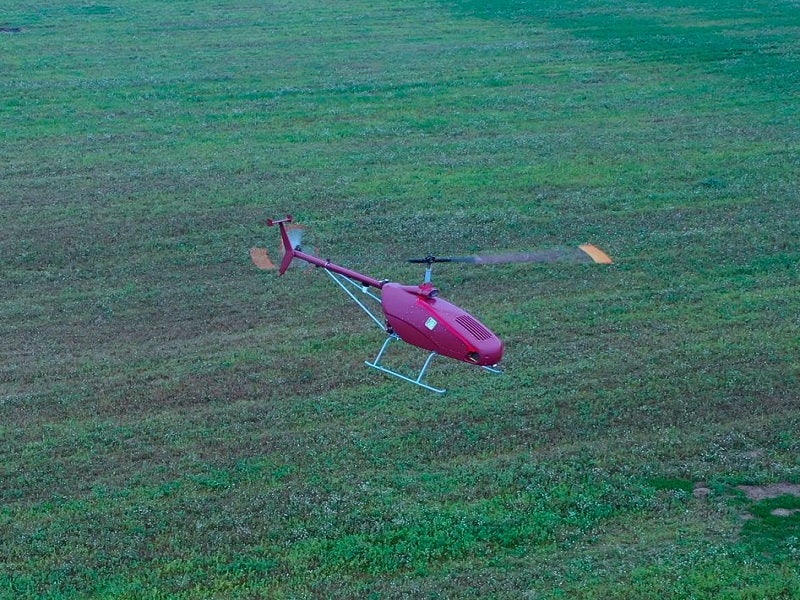The UVH-500 (KAHU-150) vertical take-off and landing (VTOL) unmanned aerial system (UAS) is a long-range, heavy-lift, uncrewed helicopter designed and developed by UAVOS, an uncrewed systems manufacturer based in the US.
It is a cost-effective platform, ideal for quick and sustainable transport of cargo with time-sensitive deliveries.
Testing of the UVH-500 began in October 2020. The UAV’s air basic aircraft systems, emergency operating modes, and flights with a 130kg cargo container are being evaluated as part of the testing.
UAVOS conducted flight demonstrations of the VTOL UAS to an undisclosed customer in July 2021. The drone successfully conducted heavy-lift operations, dropping 100kg of cargo. The performance of the drone during day and night in adverse weather conditions was also showcased during the demonstrations.
UVH-500 UAS design and features
The UVH-500 (KAHU-150) VTOL UAS is based on the CH-7 manned helicopter, manufactured by Italian aircraft manufacturer Heli-Sport. The Alpin UAV, which is developed by UAVOS and TITRA, a Turkish engineering company, is also based on the piloted Heli-Sport CH-7 helicopter.
The modified UVH-500 aircraft does not feature several parts of the CH-7 helicopter, including the cockpit, push and pull rods, and flight instruments. The parts were removed and replaced with new flight controls, server drives, and an autopilot system. The design ensures lower lifecycle costs.
UVH-500 has an overall airframe length of 7.05m, a main rotor diameter of 6.28m, and a height of 2.35m.
The maximum payload carrying capacity of the aircraft, including fuel, is 160kg, while the maximum take-off weight (MTOW) is 500kg. The aircraft has an empty weight of 340kg, and a wheelbase of 1.5m.
The UAV offers beyond visual range, long-endurance, and heavy load carrying capacity. It can withstand strong wind conditions and operate in different terrain conditions. It enables simplified operations and can fulfil operational requirements.
Flight control of the UVH-500 UAS
The VTOL UAS is equipped with a total energy control system (TECS)-based, high-efficiency flight control for lateral directional axis control. It provides a remote ground control capability.
Back-up systems are installed in the UAV to ensure high redundancy. The cargo drone features an automatic parachute release system for emergency landing.
UVH-500 UAS sensors and communications
The uncrewed aircraft is equipped with a collision avoidance transponder, which enables airspace monitoring for enhancing visibility, and reducing the threat of collisions.
Sensor payloads that can be carried by the UAV include electro-optical/infra-red (EO/IR), synthetic aperture radar-ground moving target indication (SAR/GMTI) radars, light detection and ranging (LIDAR), and hyperspectral payloads.
A beyond line-of-sight (BLOS) datalink system is installed to enable over-the-horizon operations.
Mission capabilities of the UVH-500 UAS
The long range of the UAV and the payload capacity allows it to be used for intercity cargo delivery. The UVH-500 can be operated in a series of short routes, or one long route, based on customers’ needs.
Controlled by a redundant autopilot system, the helicopter provides fully autonomous capabilities. It can operate in a fully disconnected mode.
The UAS can perform cargo delivery missions in areas that are difficult to reach. It can also be deployed in support of humanitarian and disaster relief missions.
Engine and performance of UVH-500 VTOL UAS
The uncrewed cargo aircraft is equipped with a Rotax 914 UL engine with a rated power of 115hp. The fuel tank has a capacity of 180l/135kg. The onboard power supply has a 12V/24V rating.
The UAS is installed with larger heat exchangers, with an increased operational temperature range. The increased fuel tank capacity and better engine cooling enable the UAS to operate in tropical climatic conditions.
The aircraft provides a maximum range of 840km at a cruising speed of 120km/h. It has a maximum cruising speed of up to 160km/h while the velocity-never exceed (VNE) limit is 209km/h.
It has a maximum operating altitude of 5,000m and a maximum flight time of seven hours while carrying a 20kg payload. With a 120kg payload, the flight time of the aircraft is approximately two hours. The VTOL has a climb rate of 5m/s.






